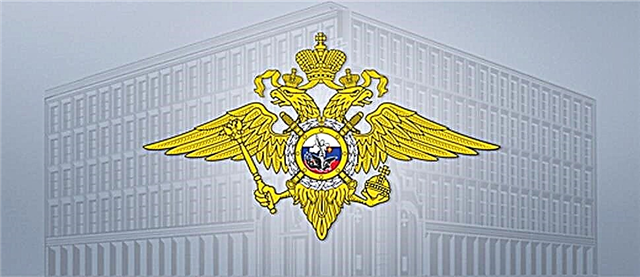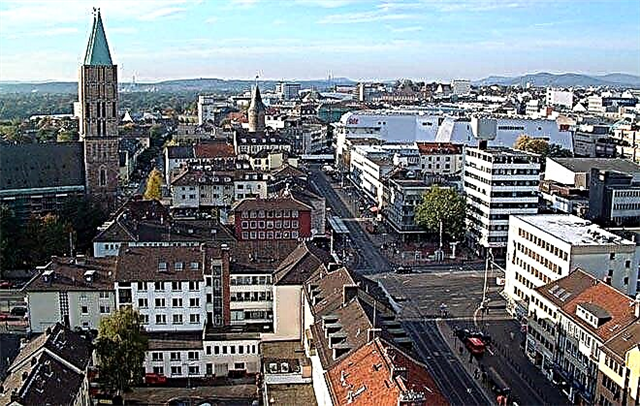Rosenstein Castle is one of the most famous landmarks in Baden-Württemberg. The former summer residence of the kings of Württemberg is surrounded by the largest landscape park in southern Germany. An elegant palace with an original facade sculpture, shady alleys and picturesque green corners attract tourists and nature lovers. If romance is your thing, check out Rosenstein Castle in Germany.
"Palace of the Rose"
Rosenstein Castle was built in the suburbs of Stuttgart in 1824-1829 for King Wilhelm I of Württemberg. The original plan of the country residence was developed by the wife of the monarch Katarina (Ekaterina Pavlovna Romanova, sister of the Russian Emperor Alexander I). But after her sudden death in 1819, the king for a long time could not choose a project that could adequately perpetuate the memory of his beloved wife. Only 5 years later, he began the construction of the castle, positioning it so that from the windows a view of Mount Württemberg and the mausoleum of Catherine was opened.
The palace is named after the rose - the favorite flower of the late Queen Katarina (from it. Rose).
After Wilhelm's death, the building turned into a kind of museum, which housed collections of paintings and sculptures, and in the first half of the twentieth century the library was housed.
During the Second World War, the castle was badly damaged by bomb attacks and was restored only in the 50s.
Since 1954, it has hosted the exposition of the Museum of Natural History; in 1985, the Museum of Paleontology moved here. In the early 90s, the palace underwent a major overhaul, taking into account modern requirements for the storage of museum collections.
Palace and park complex Schloss Rosenstein
Rosenstein Castle and Park are located on the banks of the Neckar River on the Kalenstein Hill. Today it is surrounded by residential areas on all sides, but the presence of modern civilization is hardly felt in the huge park.
Building a castle
Rosenstein Castle was planned as a summer country residence for the Württemberg royal couple. In 1818, King William I's court architect, Giovanni Salucci, began drafting the estate under the direction of Queen Catarina. But after her death, the original plans were significantly adjusted, and as a result, the king approved only the 11th option.
At that time, the Kalenstein hill, on which the castle was supposed to be built, was surrounded by swamps. Before the start of construction, it was necessary to carry out work on their drainage and lay access roads to the hill. Currently, a park area is located on the site of the former marshy meadows.
Rosenstein Palace was built in the style of late classicism. It is an elegant one-storey building of strict straight lines, built from sandstone blocks. The main entrance is decorated with a colonnade.
Due to a design error, mold developed in the castle shortly after construction was completed. Therefore, it was used only in the summer or for large-scale royal receptions. The infringement of ventilation in the plinth was eliminated during later reconstructions.
Interior
In the original plan of the castle there were 74 rooms on the ground floor and 7 rooms on the mezzanine. The interior of the palace was designed and decorated by famous German artists: Konrad Weitbrecht, Joseph Anton Gegenbauer, Johann Gütkunst, Johann Friedrich Dieterich.
During the war, a significant part of the murals and interior decoration of the castle was lost. During the reconstruction of the 90s, some of the internal premises were united.
The main historical attraction of the inner part of the palace is the portico, preserved in the former ballroom. It is a spacious room with two rows of columns and arched vaults.
The hall is decorated with a frieze "4 seasons" (artist Konrad Weitbrecht). The plaster relief includes 38 genre scenes from the rural life of the Kingdom of Württemberg at different times of the year.
The dome has a round glazed opening through which light enters the room.
Facade sculpture
The combination of classical simplicity of lines and an abundance of facade sculptures gives the palace a special elegance. Most of the facade decorations were created by the famous sculptor, professor of classical art Theodor Wagner.
During the reconstruction of the castle, the artistic sights of the outer part of the building were preserved unchanged. Some of the sculptures destroyed during the war were restored or replaced with copies recreated from surviving photographs and drawings.
Statues of ancient Greek muses are located in the arched niches on the sides of the four side loggias. Of the nine ancient mythological characters, only eight were made for reasons of symmetry.
The space under the gable roofs of the main and rear facades is decorated with reliefs depicting scenes with the participation of the Greek sun god Helios and the moon goddess Artemis-Selene.
Above the side porticos are portraits of Neptune, Flora, Diana and Apollo, surrounded by chimeras.
A relief frieze with garlands stretches along the upper cornice; below you can see 32 medallions depicting heroes of classical Greek mythology. Not a single figure on the medallions is repeated twice.
Garden sculpture
Opposite the main entrance is the sculptural group "Water and Meadow Nymphs". The original composition of the famous classical sculptor Johann Heinrich Dannecker was destroyed during the war, and a copy was installed in its place in 1982.
In the vicinity of the palace, you will find the Pink Courtyard - a cozy corner to relax among the flowers. Various varieties of roses grow on flower beds and arches.
The courtyard is decorated with three copies of the famous Greek Venuses - Milo, Capitoline and Venus Phidias. The sculptures were made in the years 1844-1854.
The pool in the center of the rose garden is surrounded by four cast vases with garland relief.
Rosenstein park
Rosensteinpark is the "green lung" of Stuttgart, the largest landscape park in southern Germany and a popular recreation area.
Simultaneously with the construction of the castle, William I began planning an English-style landscape park around it. The royal master gardener Johann Bosch even traveled to Great Britain to see how palace gardens are arranged in this country. In addition, horticultural specialists from England took part in the design of the landscapes.
The park was completed in 1840. One of its entrances is decorated with the Lion Gate (Löwentor), created by the famous architect Johann Michael Knapp. The lion figure that crowns them is a copy of the sculpture by Antonio Isopi (the original was installed in the courtyard of the New Palace in Stuttgart).
The castle is surrounded by flower beds and green lawns, and winding alleys run from it in all directions.
Despite the fact that there are many visitors to the park every day, the natural environment has been preserved here. Birds (including rare species) nest in green areas and a huge number of hares live. Hunting them is prohibited, and today there are more hares in Rosenstein Park than anywhere else in Germany.
On the territory of the park is the Wilhelm complex, which includes a botanical garden and a zoo. The Zoological Garden of Stuttgart ranks second in Germany in terms of animal diversity and is second only to Berlin.
Natural History Museum
Today, Rosenstein Castle houses a nature museum. Here you can get acquainted with the theory of evolution, the main biological groups (from unicellular algae to humans), climatic zones of the Earth. Separate sections are devoted to marine mammals and acquaintance with the wildlife of southwestern Germany.
The exposition of the museum is extensive and varied. Here, both children and adults can see and learn a lot about the nature of the planet.
The museum hosts scientific seminars, lectures, excursions for schoolchildren and individual visitors. Some events take place in the open air. The natural diversity of Rosensteinpark serves as an excellent illustration for lectures on botany or bird studies.
Tours in the palace
The outside of Rosenstein Castle is free to explore.
It is convenient to combine a walk in the park and acquaintance with the architecture of the palace with a visit to the Museum of Natural History. This will allow you to get acquainted with the surviving design elements of the palace interior.
From Tuesday to Friday the museum is open from 9.00 to 17.00, on Saturday, Sunday and holidays - from 10.00 to 18.00. Day off - Monday.
You can view the museum's exposition on your own, use the services of an audio guide for 2 € (151 rubles), or visit a guided tour for 7 € (531 rubles).
The museum also runs Sunday Family Tours that start at 15:00 and do not require prior registration. Participation fee is 3 € (228 ₽).
The schedule of excursions and events for 2021 can be found on the official website of the museum in the "Events" section (Veranstaltungen).
How to get to Rosenstein Castle
The castle is located in the Rosenstein park (Am Rosensteinpark) at Rosenstein, 1.
By public transport, you can get to the palace as follows:
- By tram lines U1, U2, U14, stop Mineralbäder, U12 to stop Nordbahnhof or U13 to stop Löwentor.
- Take the S-Bahn city train S1, S2, S3 to the Bad Cannstatt stop or S4, S5, S6 to the Nordbahnhof stop.
- Buses 43 and 44 run from the city center to Am Rosensteinpark.
- By private car, you can reach Rosenstein Park along federal highways 10, 27 and 295. There is a parking lot at the intersection of Ehmanstraße and Nordbahnhofstraße, and there is a car park near Wilhelma Zoo (13).
What else is worth seeing in Stuttgart
We recommend that you definitely see other attractions of Stuttgart:
- Wilhelm Zoo-Botanical Garden - Zoologisch-Botanischer Garten Wilhelma Stuttgart,
- New castle - Neues Schloss,
- Old castle - Altes Schloss,
- Castle Solitude - Schloss Solitude,
- Chapel on Mount Rothenberg - Die Grabkapelle,
- Cathedral of St. Eberhard - Domkirche St. Eberhard,
- Church of St. Nicholas - St.-Nikolaus-Kathedrale,
- Linden Museum - Linden-Museum Stuttgart,
- Stuttgart Museum of Art - Kunstmuseum Stuttgart,
- Mercedes-Benz Museum - Mercedes-Benz Museum,
- Porsche Museum - Porsche-Museum.
Conclusion
Stuttgart is a city where you can relax and see a lot of interesting things. Here you will find landmarks of different times and eras: from ancient castles and temples to innovative projects.











